Reimagining travel: Thailand tourism after the COVID-19 pandemic
Thailand’s economy is reliant on international tourism, a once-flourishing sector that has been impacted by pandemic restrictions. But there have been continual government efforts to boost domestic travel, and measures to support returning international demand after Thailand began reopening to vaccinated international travelers from 63 countries on November 1, 2021. 1 Pasika Khernamnuoy and Katie Silver, “Thailand reopens to vaccinated tourists from over 60 nations,” BBC, November 1 2021, bbc.com. Even as the world addresses emerging variants of the virus, Thailand’s lessons can act as a guide for other tourism-dependent countries facing similar dilemmas as they prepare for the resurgence of international travel.

A heavy blow, adjustments needed to support recovery
In 2019, Thailand ranked eighth globally in international tourist arrivals, with China being a key source market. 2 United Nations World Tourism Organization (UNWTO). Thailand recorded a high of 40 million visitors in 2019, with the top three spending categories for inbound visitors that year being in accommodation (28 percent), shopping (24 percent of spending), and food and beverages (21 percent). 3 “Summary of tourism income and expenses from foreign tourists entering Thailand in 2019,” Ministry of Tourism & Sports, October 28, 2020, mots.go.th. Furthermore, the Thai tourism sector created 36 million jobs between 2014 and 2019. 4 “Dashboard SME big data,” Office of Small and Medium Enterprises Promotion, accessed October 2021, sme.go.th.
Unfortunately, the pandemic and related restrictions have hit travel particularly hard, as international travel plunged. Passengers on international flights to Thailand dropped by 95 percent in September 2021, compared to the previous year. Hotels, in turn, only filled 9 percent of their rooms (Exhibit 1).
This decline in visitors had an outsize impact on tourism spending, as international travelers spent significantly more than their local counterparts (Exhibit 2). For instance, in 2019, international travelers made up 33 percent of overall travelers in Thailand yet accounted for almost 60 percent of all tourism spending—international tourists spent $1,543 per traveler on average, compared to $152 by domestic travelers. 5 “Tourism statistics 2019,” Ministry of Tourism & Sports, accessed October 2021, mots.go.th. This drop in expenditure undoubtedly caused a ripple effect on Thailand’s food and beverage retail industries, which include 1.2 million small and medium-size enterprises (SMEs). 6 “How to start business,” Office of Small and Medium Enterprises Promotion, accessed October 2021, sme.go.th.
Recovery appears to be on the horizon for Thailand. Assuming virus recurrence, slow long-term growth, muted world recovery, and minimal changes to global tourism strategies, Thailand’s tourism sector could only recover to pre-crisis levels by 2024.
Given that Thailand’s GDP relies significantly on foreign tourism income, the domestic tourism market alone is not sufficient to bring the nation’s tourism revenue back to 2019 figures; the sector’s recovery would depend on a resurgence in international travel (Exhibit 3). Globally, this recovery scenario would likely reshape the landscape of the world’s travel industry and create a strong imperative for both the public and private sectors to act to ensure the industry’s survival.
Efforts to stimulate tourism
Thailand has deployed various efforts to compensate for the loss of inbound tourism. Given that for most of the first quarter of 2020, Thailand saw less than 1,000 daily COVID-19 cases nationwide, with cases not rising above 4,000 until November 2020, domestic tourism was still a viable option for travelers. The Thai government’s attempt to boost domestic travel took the form of providing subsidies for hotel stays and flights for travelers. The government also rolled out measures to stimulate international travel to Thailand’s beach destinations and attract high-end travelers from international markets.
Travel together—stimulating domestic tourism
In August 2020, the Thai government launched the Rao Tiew Duay Gun (We Travel Together) program, where it set aside a budget of $640 million to help boost domestic tourism. 7 “Thailand approves domestic tourism package worth 22.4 billion baht,” Tourism Authority of Thailand Newsroom, June 17, 2020, tatnews.org.
The government subsidized a total of six million nights of hotel accommodation at 40 percent of normal room rates. The subsidy was capped at 3,000 baht ($100) per night for up to five nights. Subsidies for other services, including food, were capped at 600 baht ($20) per room per night. This subsidy was initially limited to facilities outside tourists’ home provinces, but that restriction was lifted in the second phase of the rollout in December 2020. In addition, domestic tourists traveling by air would qualify for a government refund of 40 percent of the ticket price. This was capped at 1,000 baht ($32) per seat, with a quota of 2 million seats.
The program reached its total quota of six million hotel-room nights in February 2021, seven months after its launch. 8 “FPO reveals the money we travel together, 20,000 million,” Bangkok Business News , January 4, 2021, bangkokbiznews.com; “‘We travel together’ the parade has already reserved 6 million rights. But there are still 1.35 million rights left!” Bangkok Business News , February 8, 2021, bangkokbiznews.com. During that time, at least $1 billion had been added to the Thai economy. 9 “NESDB-TAT has not yet knocked on ‘we travel together, phase 3,’” Thai PBS News , March 16, 2021, news.thaipbs.or.th.
Many operators grasped this opportunity, shifted their focus to the domestic market, and attracted local travelers by promoting flights and hotels in collaboration with the We Travel Together campaign. Destinations that once served mainly international visitors welcomed more local travelers, which has helped their economies wade through this difficult period. Many luxury hotels offered deep discounts and attractive promotions to capture the medium- to high-spend domestic-tourist segment.
These efforts to stimulate domestic travel were temporarily paused as COVID-19 cases reached a new high in July 2021. Domestic air travel in and out of red zones, including Bangkok, was banned during July to September 2021 in response to the nation’s effort to control the spread of the Delta variant. 10 “Domestic flight bans in force,” Bangkok Post , July 21, 2021, bangkokpost.com. Phase three of the We Travel Together campaign was paused during the same period, but resumed in October 2021.
Bringing back international travelers with the ‘sandbox’ approach
Despite promotional efforts for domestic travel, Thailand’s total revenue from domestic travel still saw a significant dip. The country’s revenue from domestic travel dropped from $34.5 billion to $15.4 billion in 2020. An increase in domestic spending alone would not compensate for the impact of the pandemic on the Thai economy. The country has largely been dependent on international markets, which represented about $62 billion or 60 percent of total tourism spend in 2019. 11 “Tourism statistics 2019,” Ministry of Tourism & Sports, accessed October 2021, mots.go.th.
In response, Thailand launched the “Phuket Sandbox” in July 2021, an effort to recapture demand from international travelers. The initiative offered fully vaccinated travelers (between 14 days and one year before their travel date) exemption from quarantine, provided they remain in Phuket for at least 14 days before traveling to other parts of Thailand. 12 “General information—Phuket Sandbox,” Tourism Authority of Thailand Newsroom, October 1, 2021, tatnews.org. Additionally, travelers’ stay in Phuket was restricted to accommodation establishments that have been certified by the Safety & Health Administration of the Thai government. Visitors staying in Phuket for less than 14 days were permitted to leave Phuket only if their destination was outside of Thailand.
The model hoped to draw visitors during the year-end season in Asia, Europe, and America—all key origin markets for Thailand. Several other reopening plans followed, including the “Samui Plus” and “Andaman Sandbox” plans. 13 “Samui Plus plan to generate B180m,” Bangkok Post , July 18, 2021, bangkokpost.com; “‘Adaman Sandbox’ next on govt agenda,” Bangkok Post , July 21, 2021, bangkokpost.com. Together, the schemes created a network of reopened destinations, which hoped to position Thailand as an attractive destination for international and domestic travelers alike.
The economic uplift from the Phuket Sandbox were moderate. In the period from July 1 to August 31, Phuket welcomed about 26,400 visitors, who were estimated to have spent at least $48.8 million while staying on the resort island (Exhibit 4). 14 “Phuket Sandbox generates B1,634m in two months,” Bangkok Post , September 5, 2021, bangkokpost.com.
A nationwide rise in COVID-19 infection rates in the same period meant that the government had to reconsider social distancing and other measures to minimize risk to visitors.
In any case, Thailand has gathered its learnings from the “sandbox” approach and proceeded to reopen the country to receive international travelers. As of November 1, 2021, the Thai government commenced a phased reopening of the country, allowing fully vaccinated tourists from 63 low-risk countries to visit with one day of quarantine, provided they pass a COVID-19 test upon arrival. The government has also replaced the slow-paced Certificate of Entry (COE) system with the Thailand Pass System, in an effort to make the documentation process of travelers entering Thailand more efficient than the COE application. 15 “Thailand pass,” ThaiEmbassy.com, accessed on November 1, 2021, thaiembassy.com.
The program also expanded the number of provinces open to international visitors to 17, including major tourism destinations such as Bangkok and Chiang Mai. Subject to readiness, additional major provinces are expected to reopen from December 2021 onwards. To ensure visitor safety, some COVID-19 measures remain in place, although most businesses have been allowed to reopen and nighttime curfews have been lifted in almost every province. The reopening has welcomed tourists globally, with top visitors coming from Thailand’s key source markets—the United States, Germany, and the United Kingdom (Exhibit 5).
Attracting ‘quality’ travelers, with an eye on new markets
Pre-COVID-19, China was one of the main contributors to Thailand’s tourism income, accounting for more than 27 percent of 2019 tourism receipts. 16 “Tourism statistics 2019,” Ministry of Tourism & Sports, accessed October 2021, mots.go.th. Given the current prudent approach of the Chinese government toward international travel, the road of return for Chinese visitors to Thailand will be a long one. China’s international-flight seat capacity and passenger numbers remain down by 95 percent compared to pre-COVID-19 levels, and stringent public-health measures for international travel remain in place. Thailand, therefore, needs to reimagine its strategy and try to capture new sources of international travelers in markets where there are more rapid recoveries of international travel demand.
The situation may change rapidly, particularly in these volatile times; closely monitoring the revival of these top source markets, particularly around the country’s stance towards viral control measures, will help industry players plan their recovery efforts and capture untapped value.
Recognizing these shifting traveler trends, and the resilient nature of premium traveler groups, the Thai government is striving to attract “quality” travelers from these source countries. Measures include revisiting and relaxing certain regulations—such as yachting regulations and taxes on personal belongings and luxury goods—to improve and stimulate the premium travel experience.
Taking this a step further, the Thai government is preparing to launch a long-term residence program to attract foreigners to the country through new Long-Term Resident (LTR) visas (up to ten years), tax and investment incentives, foreigners’ residential property ownership relaxations, and more. The program will target four key personas: the wealthy global citizen, the wealthy retiree, the work-from-Thailand professional, and the high-skilled professional. The country’s ambition is to welcome over one million of these target personas and generate over 1 trillion baht in domestic spending in the next five years, beginning in 2022.
Emerging from the storm: Actions for travel and tourism
Thailand has put innovative measures in place to help its vitally important travel and tourism sector wade through the COVID-19 crisis. As new variants of the coronavirus emerge, health and safety should remain the foremost priority as countries contemplate their travel programs. Once it is safe to do so, there are actions that stakeholders can take to steer into and thrive within the next normal.
Adjust offerings and pricing strategy to meet market needs. Hotels, tour operators, restaurants, and transport providers could look to explore opportunities to offer services and products that meet new travel demands.
Bundle products, such as hotel and flights, offer upselling and cross-selling opportunities as well as a diversified revenue stream.
Travel companies could also devise and deploy targeted pricing strategies to drive long-term loyalty and stickiness for when international travel fully returns. Given the phased reopening of popular provinces in Thailand, and the inclusion of more visitors from select countries on a quarantine-exemption list, travel companies can leverage data on traveler behaviors to set the right prices and conduct targeted campaigns by country of origin and destination.
Explore opportunities within the mass-affluent traveler segment. Focusing on premium travel experiences may be a viable strategy in some markets, but it may have limited impact in Thailand. Given that the top three inbound visitor-spending categories in 2019 were shopping, accommodations, and food, targeting the high-end market would only benefit a small segment of travel companies and would not contribute to the country’s economic recovery across all relevant sectors.
By promoting more differentiated travel experiences and attractions such as ecotourism and cultural tourism, which are naturally location based and sought after by younger mass-affluent travelers, operators could contribute to greater aviation and transportation use in Thailand.
Form partnerships across the travel ecosystem. As a result of the government’s We Travel Together program, which subsidizes travel through a digital redemption mechanism (the Pao Tang app), the country has seen an estimated 30 to 40 million users join and use the platform. 17 Krung Thai Bank equity research, April 2021. This has created an opportunity for domestic consumer data to be collected and analyzed to provide more personalized tourism offerings that consumers are more likely to consider spending on.
Taking this a step further, tour operators, restaurants, and shopping malls might link up, creating a connected ecosystem where a traveler could be strategically engaged through multiple personalized services, products, and loyalty programs along their journeys.
Expand the network of destinations. There is an opportunity to offer travelers a wider variety of destinations in first- and second-tier cities, such as Nakhon Si Thammarat, Chiang Rai, Nakhon Nayok, Ratchaburi, and Loei. These locations have been able to sustain visitor numbers at a relatively low rate of decline, largely due to domestic travelers looking for new places to visit during international travel restrictions.
With a boost in promotion and appropriate infrastructure investment, tourism will not only contribute to the survival of the industry in these cities, but it could also lead to enduring tourist appeal that extends beyond domestic traveler groups, especially with the gradual return of international visitors. For example, the Tourism Authority of Thailand is collaborating with airlines to offer direct flights to alternative second-tier tourism destinations.
Leverage digital to connect, attract, and retain travelers. Travel companies can digitalize the customer journey from check-in through payment, including the provision of maps and information. Traveler preferences can be tracked in real time to design better and more relevant offerings, while digital booking channels can target different customer segments. Digital marketing can also entice visitors to return and to share their experiences on social media.
For instance, the Tourism Council of Thailand is working with Singapore-based IsWhere to deploy a digital-marketing platform for tourism business operators to better connect and engage with a potentially sizeable number of domestic and international travelers; the platform’s prior partnership with a major tech company has enabled it to reach 600 million digital customers worldwide.
Reimagine support needed by industry players. In the short term, industry players would need stimulus, support, and guidance on health and safety policies from the government. In the medium term, small and medium-size players would benefit from the government’s support in adjusting to online travel services and digital marketing, such as a one-stop digital platform to connect industry players with international travelers.
As such, the Tourism Authority of Thailand announced its plan to establish a private digital firm to work on creating a digital infrastructure for tourism, utilize big data in the industry, and potentially introduce blockchain-based e-vouchers and nonfungible tokens to provide tourism operators with more options for reaching travelers online and offline.
In the wake of the COVID-19 pandemic, tourism recovery in Thailand will be gradual and complex and requires varied strategies from both industry and government. As the world eagerly prepares for the eventual revival of international travel, Thailand and other countries can draw important lessons from its experience during this difficult interim period.
Steve Saxon is a partner in McKinsey’s Shenzhen office; Jan Sodprasert is a partner in the Bangkok office, where Voramon Sucharitakul is an associate partner.
The authors wish to thank Margaux Constantin , Kamila Dolinska, Steffen Köpke, Alan Laichareonsup, Jason Li, Georgie Songsantiphap, and Jackey Yu for their contributions to this article.
Explore a career with us
Related articles.
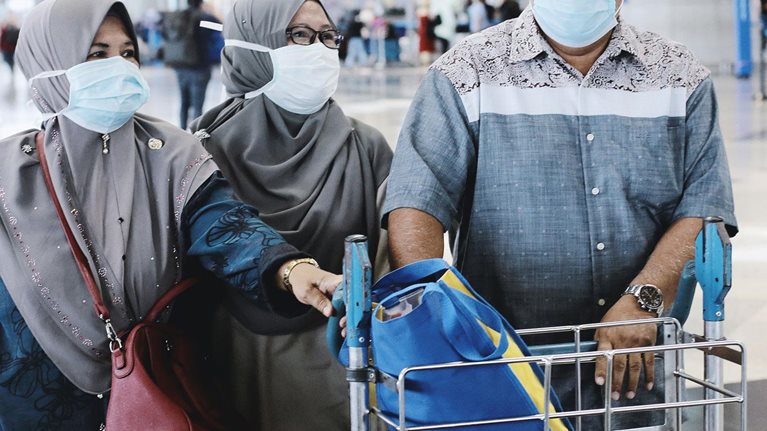
Reimagining the $9 trillion tourism economy—what will it take?

Make it better, not just safer: The opportunity to reinvent travel
A new approach in tracking travel demand
TAT strengthens “Visit Thailand Year 2023” towards a meaningful travel direction
A series of new concepts and enhanced efforts are introduced to continue the milestone achievement from the ‘visit thailand year 2022’ campaign..
Bangkok, 12 January, 2023 – The Tourism Authority of Thailand (TAT) is strengthening the ongoing “Visit Thailand Year: Amazing New Chapters” campaign towards a meaningful travel direction. Underlining the kingdom’s soft power foundations and experience-based tourism, key strategies include elevating supply and sustainable standards, and raising awareness among stakeholders about the importance of being hospitable hosts to all visitors.

In its first year, the ‘Visit Thailand Year 2022’ campaign was at the forefront of the kingdom’s efforts to drive the Thai economy forward. Thailand welcomed 11.8 million international tourists and recorded 189 million domestic trips – a milestone achievement that reflected the successful restoration of the country’s tourism industry from the concerted efforts of all stakeholders.
With this tourism revival continuing to pick up momentum amid volatile global challenges, Thailand is aiming for 2.38 trillion Baht in overall tourism revenue in 2023 – representing a return to 80% of the pre-pandemic level seen in 2019.

Mr. Yuthasak Supasorn, TAT Governor, said “The 2023 target is a result of a carefully planned strategy to continue the milestone achievement of 2022. The “Visit Thailand Year 2023: Amazing New Chapters” campaign represents a commitment from TAT and all stakeholders in the public and private sectors, as well as the Thai people to maintain tourists’ confidence in Thailand as a preferred tourist destination.”
Through the “Visit Thailand Year 2023: Amazing New Chapters” campaign, TAT is placing emphasis on the promotion and development of high value and sustainable tourism in Thailand. This includes elevating the tourism supply (Shape Supply) with an aim to offer experience-based tourism, and leveraging the kingdom’s 5F soft-power foundations – Food, Film, Festival, Fight and Fashion – to offer meaningful travel experiences in Thailand.
“Amazing Thailand” branding
TAT will continue to communicate and strengthen the long-standing ‘Amazing Thailand’ branding in its global campaign. This will be accentuated by the “Amazing New Chapters” concept to promote Thai soft-power cultural values and inspire travellers from around the world to visit Thailand once again, and further reaffirm the kingdom’s well-established status as one of the world’s most popular holiday spots.
Meanwhile, it is introducing the new “Create Your Right Moment” concept in its domestic campaign to inspire domestic travellers to travel more within the country.
“Amazing 5F and More”
TAT is introducing the new “Amazing 5F and More” concept, aimed at delivering meaningful travel experiences in various aspects such as wellness, luxury, and Thainess. At the same time, it is placing focus on enhancing the quality of tourism products and services in order to drive the Thai tourism industry towards sustainable growth. Among key activities include the Good Host New Chapter Season 2 project, the Amazing Thailand Safety and Health Administration (SHA) certification, and the 14 th Thailand Tourism Awards.
A series of events to highlight the kingdom’s 5F soft-power foundations – Food, Film, Festival, Fight and Fashion – will take place throughout the year.
- Food – at least two events are planned: Amazing Thai Tastes during March-June and Bangkok International Food Festival in June.
- Festival – events include Chinese New Year in January, Songkran Thai New Year in April, and Loi Krathong in November.
- Film – the Amazing Film Festival Experience in August, while a Y series Meet & Greet event is being planned.
- Fight – Amazing Muay Thai Festival in February.
- Fashion – Valentine Fashion TV Beach Award Festival in February.
Policy and Planning
To drive tourism towards sustainability, TAT is adopting the BCG Model to highlight Gastronomy Tourism. By collecting and analysing data under ‘ From Policy Lab to Real Product’ strategy, TAT has come up with the Best Practice Model to showcase organic cuisine and to transform to inclusive business and smart organic farmer, which leads to generating income for the local community.
Technology and Innovation
Seeing ‘Digital as a Game Changer’ ,TAT leverages technology and innovation to add value and transform Thai tourism to Smart Tourism. It is tapping into Digital Asset holders via the TAT NFTs projects, promoting Thai tourism products and services with virtual arts and Metaverse. It introduces the ‘3I’ concept: Intelligence – using Big Data and building Digital Literacy for TAT employees, Innovation – developing new innovation and Travel Tech, and Investment – investing in digital transformation, such as Start-up, Venture Capital, Cloud funding, etc.
TAT is committed to developing its human resources to be ready to support and collaborate with the Thai tourism industry, while strengthening and improving its work processes through innovation and technology.
International Market
TAT is adopting the ‘Great Resumption Episode II’ strategy for short-haul markets. This include:
1) China is back – Placing focus on tapping emerging segments and enhancing cooperation with the airlines to increase air access flights to cater to the increasing demands and promoting new modes of travelling, such as an overland border.
2) 7 Digits Target – Focusing on rapidly growing markets, such as China, Malaysia, India, and South Korea, as well as cooperating with partner agents and airlines.
3) Colour Your Life by Amazing Thailand – Seamlessly integrating the Amazing Thailand brand in the tourist’s slice of life through on-site and virtual marketing promotional events.
4) Responsible Tourism – Supporting CSR and responsible tourism projects, such as Reborn the Nature to advocate tourism sustainability.
5) 2 Tier, Second to None – Encouraging visitors to visit the emerging destinations, while sourcing new tourist segments from secondary cities in South Korea, China, India, Vietnam, and Malaysia.
For long-haul markets, TAT is adopting the ‘A-B-C-D Fast Forward’ strategy.
A – Airline Focus to continue the collaboration with the leading airlines; such as, Qatar Airways, Etihad, and Oman Air to expand new routes and increase the frequency of direct flights.
B – Big Cities and Beyond to penetrate new markets in major and secondary cities; such as Bucharest in Romania, and Sofia in Bulgaria.
C – Collaboration is Key to work with new partners including airlines; such as, Delta Airlines, Air Canada, FlyDubai, and Aeroflot, and online travel agency; such as, Almosafer and SAGA Holidays.
D – Destination for All to promote Thailand as an “All-year round Destination” to meet the demand for visitors with regardless of seasons and with all segments including family, medical and wellness in the Middle East or the LGBTQ+ in Europe and America.
Domestic Market
TAT is placing focus on ‘Value over Volume’ under the new ‘Travel Thailand in Limited Edition’ concept highlighting the 5F Soft Powers to cater to the various needs of domestic travellers.
Various events are being planned for 2023 to inspire domestic travel, including Travel 365 days in Amazing Thailand, Vijit Thailand 2023, and Amazing Thailand Festival Experience 2023.
TAT is also continuing its efforts to encourage domestic travellers to visit emerging destinations during weekdays to expand the expenditure and balance the capacity of the destinations.
2023 Targets
TAT expects to welcome 25 million international tourists and inspire 250 million domestic trips in 2023. The target for overall tourism revenue is 2.38 trillion Baht comprising 670-880 billion Baht from domestic tourism and 1.5 trillion Baht from international tourism.

TAT Newsroom
Thailand welcomes first group of chinese tourists post pandemic, tat introduces “the michelin experience @ isan”, related articles.

New Netflix Film ‘Mother of the Bride’ Spotlights Phuket as a Hub for Global Film Production

TAT outlines plan for greater promotion of lower central region


This website is managed by Siam Legal International - a law firm in Thailand

Latest Thailand Entry Requirements
After two years of dealing with Covid, international travel is returning to normal. To help welcome visitors back to the Land of Smiles, the Thai government lifted its final restrictions on July 1st, 2022.
From July 1st, the following changes have been implemented for all international travelers.
- Foreigners do not need to show proof of Covid Insurance.
- All mandatory hotel quarantine has been removed.
- Thailand Pass is no longer required for foreign travelers entering Thailand.
- Vaccinated travelers do not need to provide proof of vaccination to Thai authorities before arriving.
- Unvaccinated travelers (including children traveling with unvaccinated parents) will need to complete an RT-PCR or Professional Antigen Test (Pro-ATK) 72 hours before departing for Thailand. Proof does not need to be uploaded before traveling.
- Airlines and Thai Immigration will do random checks to confirm travelers meet Covid prevention requirements (vaccination or Covid test).
Below is a full list of what international travelers need before entering Thailand.
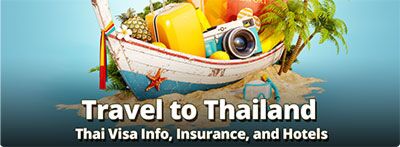
Required Documents for Travel to Thailand
Please have the following documents ready.
- Passport with at least six month validity
- Visa or visa exemption qualification
- Buy Thailand Travel Insurance
- Boarding pass to be presented at Passport Control
- Hotel booking confirmation if asked by Immigration Officer
- Note: Vaccination record no longer required
Incorrect documents will delay the entry screening by rules from the Thai immigration bureau and its Thai immigration officials.
Buy Your Insurance Now
Passport Validity / Visas
The first thing to check before planning to travel to Thailand is the validity of your passport. International travel requires that your passport is not expiring within six months of your travel date. If you have less than six months left on your passport, you cannot enter Thailand.
If you are planning to travel in the future, check your passport early so you know if you need to apply for a new one or not. It is best to check with your local embassy about how long it will take to receive your new passport. As people look to travel again, passport departments are swamped with new applications and this is causing a backlog in many countries.
There are several visas available to foreigners who are planning to visit Thailand. The visa you need will depend on where you are from, your purpose of travel, and how long you intend to stay.
Visa Exemption
A foreign visitor may enter Thailand under the Visa Exemption Program . Nationalities under the Visa Exemption Program may enter Thailand without a visa from a Thai Embassy or Consulate.
Upon arriving in Thailand, most nationalities who are part of the Visa Exemption Program may stay for up to 30 days. Certain nationalities can arrive as part of this program, but for a shorter time. It is best to check the country exemption list and confirm how long you can visit Thailand without needing to apply for a Visa.
Tourists arriving under visa exemption are eligible to extend their stay for up to a further 30 days by visiting a local Thai Immigration Office. The cost to extend is approximately 2000 baht.
There is often confusion about Visa Exemption and “Visa on Arrival”. Visa on Arrival is a 15-day visa for travelers from India, China, and 16 other countries. If you do not find your country on the Visa Exemption list, it is best to check the Visa on Arrival list.
There are some important things to note for Visa on Arrival:
- A passport must be valid for at least 30 days.
- The purpose of the visit is strictly tourist.
- A visitor must show an address in Thailand where they will be staying.
- A traveler must have a confirmed return flight.
- Must show proof of funds to the value of 10,000 baht per person or 20,000 baht for a family.
- A fee of 2000 baht is paid on arrival. The fee must be paid in cash and in Thai baht.
Tourist Visa and Special Tourist Visa (STV)
Foreigners may also apply for a Tourist Visa from a Thai embassy or consulate. There is the normal 60-day tourist visa that can be extended for additional 30 days, or the 90-day Special Tourist Visa (STV), which can be extended for 90 days twice at a local immigration office. There are certain requirements needed for the STV, but it allows a visitor to potentially stay in Thailand for 9 months. The Special Tourist Visa is currently scheduled to halt applications in September.
Contact your local Thai Embassy to verify what documents are needed to complete the process. When your visa is approved, the Embassy will place a sticker on your passport, so allow time for potential postage.
For those entering Thailand for a different purpose of stay, they need to obtain a Thai visa from their local Thai Embassy or Consulate prior to coming to Thailand.
Non-Immigrant Visa
Foreigners may apply for a wide range of long-term non-immigrant visas:
- Non-immigrant B Visa – for conducting business or employment
- Non-immigrant O visa – for visiting Thai spouse and family
- Non-immigrant ED visa – for students of recognized institutions in Thailand and their Parents or Legal guardian
- Non-immigrant O retirement visa – for those who wish to retire in Thailand
- Non-immigrant OA and OX visa – for those who wish to obtain a Thailand retirement visa for a long stay (it differs from type O visa)
The above visas can be organized at a local Thai Embassy or Consulate. The paperwork can be quite involved, but there are companies that can help.
Siam Legal International is a reputable company in Thailand that has offered visa assistance to foreign visitors for years. They are well versed in Thai immigration policies and processes. If you would like to streamline your long-term stay in Thailand, it is worth contacting them.
Thai Elite Visa
If you wish to make Thailand easily accessible for many years to come or are perhaps thinking of relocating permanently, it is worth having a look at the Thai Elite Visa.
The Thai Elite Visa allows foreign citizens to live in Thailand for 5, 10, or even 20 years. Thai Elite members do not need to worry about some of the eligibility criteria that are needed when applying for other long-term visas.
The Thai Elite visa is an exclusive visa that offers a host of benefits to holders. If you want to enjoy “Thai life” for the long term, you can read more about the Thai Elite Visa .

Proof of Vaccine or Testing
How a visitor enters Thailand will still depend on their vaccination status.
Vaccinated Travelers
Vaccinated travelers do not need to provide proof of vaccination to Thai authorities before arriving. A vaccinated traveler will need to have a copy of their vaccination certificate either printed or on a digital device and be able to present it if asked.
Thailand does not require visitors to have had a third booster shot. 2 shots (1 shot for Jansen) is considered fully vaccinated and accepted.
Unvaccinated Travelers
Unvaccinated travelers will need to complete an RT-PCR test or Professional Antigen Test (Pro-ATK) within 72 hours before boarding a flight in their departure country. They will need to have a copy of the test result and be able to present it if asked.
The RT-PCR and Pro-ATK test must be completed by a medical professional and a test report received. The home ATK (RAT) self-test is not acceptable for entering Thailand.
Vaccination and Testing for Children
The testing requirement for children under 18 depends on the vaccination status of their parents. Children traveling with vaccinated parents do not need to complete any RT-PCR or Pro-ATK test before entering Thailand. Children traveling with unvaccinated parents will need to complete the same test as their parents within 72 hours of departing their home country.
It is important to note that many airlines are still asking for proof of vaccination or a Covid test before boarding flights. If you cannot produce one of these documents, you might not board the flight.
Though foreigners no longer need to provide evidence of testing or vaccination prior to arriving in Thailand, they are still required. Thai authorities are conducting random checks of international passengers and if a vaccination certificate or test result cannot be shown, a visitor will not be allowed to enter Thailand.
Insurance has become a dirty word during Covid. Seasoned travelers have always understood the importance of having comprehensive Travel Insurance when traveling abroad. Travel insurance protected travelers from unexpected incidents like:
- Medical emergencies
- Personal injury & accidents
- Missed or delayed flights
- Damage to belongings
- Lost luggage
It was one of those things that people hoped they would never need but regretted not having when needed.
During the Pandemic, proof of insurance became mandatory when visiting countries like Thailand. Over time, people stopped referring to insurance as “Travel Insurance” and always referred to it as “Covid Insurance”. Because you had to have it, it was another hoop to jump through.
The good news is that you no longer need to provide proof of “Covid Insurance” to enter Thailand. But it is recommended because all the things listed above can still happen, and Covid has not disappeared completely.
Foreign visitors are not eligible for free medical care in Thailand if something should happen. Whether it be an accident or personal injury, if a visitor needs medical help, or has a canceled flight, they will need to cover any expenses themselves. Depending on the severity, this could be hundreds, if not thousands, of dollars.
Buying good Travel Insurance shouldn’t break the bank. Protecting yourself is cheaper than medical bills, new flights, and replacing lost luggage.
You can buy Travel Insurance from many companies. But if you are looking for coverage that is designed for Thailand, is trusted by Thai authorities and medical institutions, and offers a helpline with people who speak the local language and know the country’s procedures, it is worth checking out AXA Thailand .
Their policies are well priced, straightforward, offer many benefits to its customers, and can be approved in minutes.
Get your travel insurance here: https://u.axa.co.th/Sawasdee_Siamlegal

Hotel and Proof of Address Updates
Previously, a foreign visitor would complete an Arrival Card (TM6) before entering Thailand. This requirement has been temporarily removed as part of a new initiative by the Thai government.
A visitor no longer needs to provide proof of a hotel booking before departing their country, but will still need to provide an address when passing through Passport Control in Thailand. This address can be a hotel, home, or friend’s address.
This is especially true with people arriving on a pre-approved visa from a Thai Embassy or Consulate.
From July 1, travelers are no longer required to book a SHA+ hotel and undergo an RT-PCR test on arrival. Most hotels have removed their SHA+ quarantine packages, but you will still see the SHA+ badge displayed on hotels.
It is recommended to browse hotels in Thailand on Agoda.com before arriving as it is easier to organize transport to your first night’s rest if pre-booked.

Thailand Pass
From July 1st, 2022, foreign travelers no longer need to apply for a Thailand Pass before entering Thailand. The system is still in place but is now a platform where visitors can notify the Thai authorities and medical facilities if they are diagnosed positive for Covid during their stay.
If you need to access the Thailand Pass system while in Thailand, please visit https://tp.consular.go.th/ and register by filling in your personal details on the Thailand Pass registration page.
International Arrivals
Travelers do not need to provide any proof of flights before leaving their home country.
There is a lot of discussion about whether a return flight needs to be booked when entering Thailand. Technically, all visitors should have a return flight booked. However, you will not always be asked to present evidence of a return flight.
If a visitor is entering Thailand with a pre-approved visa, or Visa on Arrival, they will often be asked to present details of their exit flight. Sometimes a visitor did not have a return flight and had to book a flight on the spot before being processed through Passport Control. To avoid this, it is best to book an exit flight that can be changed. You can always change your plans once in Thailand.
Domestic flights
There are no longer any restrictions on domestic flights and travel. When entering Thailand at an international terminal, a traveler is free to transit to a domestic flight right away. “Sealed” flights have been removed.
Domestic airlines will not always ask for proof, but it is best to have your vaccination certificate or Covid test result on hand in case you are asked to show it.
Siam Legal has received reports from potential clients that some hospitals are creating difficulties for them until full payment is made for their medical expenses. Also, foreigners have allegedly been threatened with lawsuits for not settling their medical bills before being discharged. Using out-of-country policies can be problematic. We recommend using insurance providers headquartered inside Thailand with a proper cover to avoid any undesirable outcomes.
Siam Legal International, a premier law firm in Thailand, recommends purchasing the proper insurance and so endorses AXA Insurance for your travel to Thailand insurance needs.
HERE ARE SOME IMPORTANT POINTS YOU NEED TO KNOW BEFORE PURCHASING TRAVEL INSURANCE
- Please review the details of any insurance before purchasing to understand if the policy has adequate cover. Cheap policies with inadequate levels of cover can lead to significant personal liability, and scenarios where policy holders incur hundreds of thousands of baht in out-of-pocket medical expenses have been reported. There are significant financial risks to being underinsured during your stay in Thailand.
- These policies do not cover medical costs from accidents (like motorcycle accidents) or common unexpected illnesses (common fever or food poisoning). Best to pay a few baht more for the peace of mind that comes from having proper coverage.
- AXA covers medical expenses (outpatient and inpatient) for accidents and illnesses, including COVID-19. Other insurance coverage might not.
- AXA also covers telemedicine and teleconsultation, which may be required during the quarantine period of any traveler.
Thai hospital staff are familiar with AXA cover, which should prevent any inconvenience during hospital admission or medical treatment from your hotel room. AXA Thailand also offers 24/7 local support during your stay in Thailand.
You can buy your Thailand Travel insurance today at:
https://u.axa.co.th/Sawasdee_Siamlegal
List of approved covid-19 vaccines.
As of December 1, the MoPH has approved the following vaccines:
- Pfizer–BioNTech or Comirnaty
- Janssen or Janssen/Ad26.COV2.S
- AstraZeneca or Covishield
- Sinopharm or COVILO
- CoronaVac or SinoVac
- Sputnik Lite
How to Obtain Travel Insurance
Though COVID-19 insurance is no longer mandatory for entry to Thailand, it is recommended to have comprehensive Travel insurance for the duration of your stay. Good travel insurance covers not only medical expenses relating to Covid but also accident cover, personal damage, loss of possessions, and missed or delayed flights.
It is best to purchase insurance before you travel. The easiest way to buy your policy is online through a reputable insurance provider. The insurance company will provide you with the all-important certificate of cover that you can present to authorities or medical professionals if you need to make a claim.
You may also be asked to present this certificate to the airline before they will allow you to onboard. It’s quick and easy to do online. You can choose your length of policy from 7, 15, 30, 60 days, and 180 days. Just make sure that the policy covers your entire period of stay in Thailand as foreigners are not eligible for free medical care in Thailand and insurance companies will not cover claims for existing conditions.
You may purchase AXA COVID-19 travel insurance within a few minutes. Check them below.
You can buy budget insurance here: https://www.siam-legal.com/axa-insurance

How to Open a Bank Account in Thailand
Siam Legal offers and provides aid for a smooth and hassle-free way to open up a Thai bank account.
- You will receive help in opening a savings/current bank account
- You will receive a Bankbook and a debit/ATM card
- Online Banking (Thai mobile number is required)
Requirements
- Guarantee letter (to be provided by Siam Legal)
- The applicant may book our service online.
- Our staff will prepare the application and necessary documents for the bank and arrange an appointment with the applicant.
- The applicant will collect the application form and documents from the Siam Legal Bangkok office and proceed to the specific bank branch. Opening the account at the bank takes 1 to 2 hours.
Service Fee
Our service fee is 150 USD for opening a Thai savings account in Bangkok.
City Travel Guide
- How to Travel to Bangkok
- How to Travel to Phuket
- How to Travel to Pattaya
- How to Travel to Chiang Mai
- How to Travel to Samui
- How to Travel to Hua Hin

Useful Links
- Best COVID-19 Insurance for Foreigners
- Thailand Elite Visa – long term visa option for Thailand
- How to Travel to Thailand in 2022 – Your Ultimate Guide
Related Posts
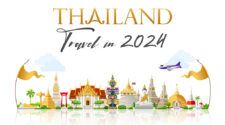
How to Travel to Thailand in 2024

Best Places to Retire in Thailand for Couples

How to Retire in Thailand for Couples

Thailand Travel Restrictions 2023
Thai Destination
Rules for travel to Thailand explained
The tourism authority of thailand (tat) on friday issued a statement clarifying rules and restrictions for international tourists arriving in the country from november 1..
Thailand will from Monday be open to fully-vaccinated visitors from 46 countries/territories.
There are currently three entry options for foreign tourists, including Exemption from Quarantine, Living in the “Blue Zone” (17 sandbox destinations) and Happy Quarantine Nationwide.
All travellers are required to register for the Thailand Pass before arrival and download the MorChana application upon arrival. Each traveller is also required to have insurance coverage of no less than US$50,000.
Exemption from Quarantine
Travellers under this scheme must produce proof of vaccination at least 14 days before travelling. This rule does not apply to children below the age of 12 travelling with their parents. They are also required to produce a negative RT-PCR test result issued within 72 hours of travel.
They must also have a confirmed booking for the first night at a SHA+ hotel or an alternative quarantine (AQ) site. At the hotel, they will undergo an RT-PCR test and are only allowed to check out if the result is negative. Tourists are also required to take an ATK self-test on day six or seven of their stay in Thailand.
Living in the Blue Zone
Double-jabbed travellers arriving under this scheme will be required to spend their first seven days in the sandbox area before they can travel to other areas.
They are required to show a confirmed booking for seven days at a SHA+ or AQ hotel as well as a negative RT-PCR test result taken within 72 hours of travel. They will undergo another RT-PCR test upon arrival at the hotel and are required to take an ATK self-test on day six or seven.
Travellers under this scheme must provide proof of complete vaccination, though children below 12 travelling with parents are exempted.
These travellers are allowed to travel freely within the blue zone for the first seven days.
The sandbox “blue zone” covers: • Bangkok • Krabi • Chonburi (Bang Lamung, Pattaya, Sri Racha, Koh Sichang, Sattahip, Na Jomtien, Bang Saray) • Chiang Mai (Muang, Doi Tao, Mae Rim, Mae Taeng) • Trat (Koh Chang) • Buri Ram (Muang) • Prachuap Khiri Khan (Hua Hin, Nong Kae) • Phang Nga • Phetchaburi (Cha-am) • Phuket • Ranong (Koh Phayam) • Rayong (Koh Samet) • Loei (Chiang Khan) • Samut Prakan (Suvarnabhumi Airport) • Surat Thani (Koh Samui, Koh Pha-ngan, Koh Tao) • Nong Khai (Muang, Si Chiang Mai, Tha Bo, Sangkhom) • Udon Thani (Muang, Na Yoong, Nong Han, Prajaksilpakom, Kumphawapi, Ban Dung)
Another 16 provinces will be added to the list of sandbox destinations in the second phase in December, namely Ayutthaya, Chiang Rai, Khon Kaen, Lamphun, Mae Hong Son, Nakhon Ratchasima, Nakhon Si Thammarat, Narathiwat, Pathum Thani, Phatthalung, Phrae, Phetchabun, Songkhla, Sukhothai, Trang and Yala.
In the third phase, which kicks off on January 1, another 12 provinces will be opened under the sandbox scheme. They include Bueng Kan, Chanthaburi, Kanchanaburi, Mukdahan, Nakhon Phanom, Nan, Ratchaburi, Sa Kaew, Satun, Surin, Tak and Ubon Ratchathani.
Happy Quarantine Nationwide
Under this scheme, double-jabbed travellers can go anywhere in the country after being quarantined for seven days, while unvaccinated tourists arriving by air or boat will be quarantined for 10 days. Those travelling by land will undergo a 14-day quarantine.
Travellers must have a negative RT-PCR test result issued 72 hours before travelling except for Thai nationals. Those under this scheme will undergo an RT-PCR test on arrival and again on day six or seven, day eight or nine, or day 12 or 13 based on the quarantine requirements.
They are also required to produce proof of confirmed hotel booking for seven, 10 or 14 days as required.
Visa requirements
There are currently two types of tourist visa on offer: • Single-entry tourist visa: Allows stay for up to 60 days with a possible one-time extension of 30 days. • Special Tourist Visa (STV): Allows stay of up to 90 days with a possible extension of 90 days twice.
Visit www.thaievisa.go.th for details and to file a visa application.
Thailand Pass
From November 1, the Thailand Pass system will replace the Certificate of Entry (COE) and can be applied for at https://tp.consular.go.th/ .
However, a COE will be required for certain groups of travellers such as medical tourists who need to stay in Alternative Hospital Quarantine (AHQ), those who cross land borders or those travelling in yachts or cruise ships.
Before arrival, travellers must have their passport, visa (if required), insurance and hotel reservation confirmation ready to apply for the Thailand Pass. Applications must be submitted at least seven days before travel. Upon submitting their application, travellers will be given a Thailand Pass QR code, after which they need to take an RT-PCR test within 72 hours before departure.
Upon arrival, visitors must show the QR Code and test result to immigration officers before being let through. They will then take an RT-PCR test at the airport, hotel or designated accommodation.
Visit https://www.tatnews.org/category/thailand-tourism-updates/ for more information.
MOST VIEWED
New zealand-thailand partnership focused on green building, hong kong is the perfect backdrop for under parallel skies, thai solar panels exported to the us likely to face a 250% tariff wall, bangkok un summit highlights urgent need to combat child abuse, phyathai hospital group rebrands into premium segment.

The Cabinet on 14 February 2023 approved a draft announcement of the National Tourism Policy Committee on the collection of the “Thailand Tourism Fee” for international tourist arrivals.
According to the announcement, each foreign tourist entering Thailand by air will be charged 300 baht for each trip, while the fee for foreign tourists arriving by land and sea will be 150 baht per person.
The fee collection is not applied to those who hold diplomatic and official passports, work permits for specific professions as stipulated by the Ministry of Labor, transit passengers, and children under two years old, as well as other persons specified by the National Tourism Policy Committee.
The Thailand Tourism Fee will be used for tourism development in the country and for insurance coverage for foreign tourists while they are in Thailand. The fee will also support healthcare for foreign tourists.
The announcement will come into effect within 90 days after being published in the Royal Gazette, or tentatively in June 2023.
The Cabinet also assigned the Royal Thai Police (Immigration Bureau) to improve its regulations, methods, and conditions concerning immigration documents and related immigration laws. Receipts for the Thailand Tourism Fee will be used by the authorities as evidence to allow entry permits for foreign tourists.
The Government spends about 300-400 million baht a year on medical costs for foreign visitors at public hospitals. Budget allocations have also been provided to take care of tourist sites, develop facilities for tourist safety and security, and preserve the environment and natural resources.
Thailand focuses on overseeing safety measures related to tourism. This will promote international tourists' confidence in their safety while in Thailand and boost the favorable image of the country, as well.
Foreign Office, The Government Public Relations Department, Office of the Prime Minister 9 Rama VI Road, Bangkok 10400, Thailand Fax : (+66) 2618 2358 E-mail : [email protected]

Website Policy | Privacy Policy | Security Policy | Disclaimer | Cookies Internet Explorer v.11+, Microsoft Edge, Firefox v.47.0+, Chrome v.51+
17 things you need to know before visiting Thailand

Oct 28, 2023 • 7 min read
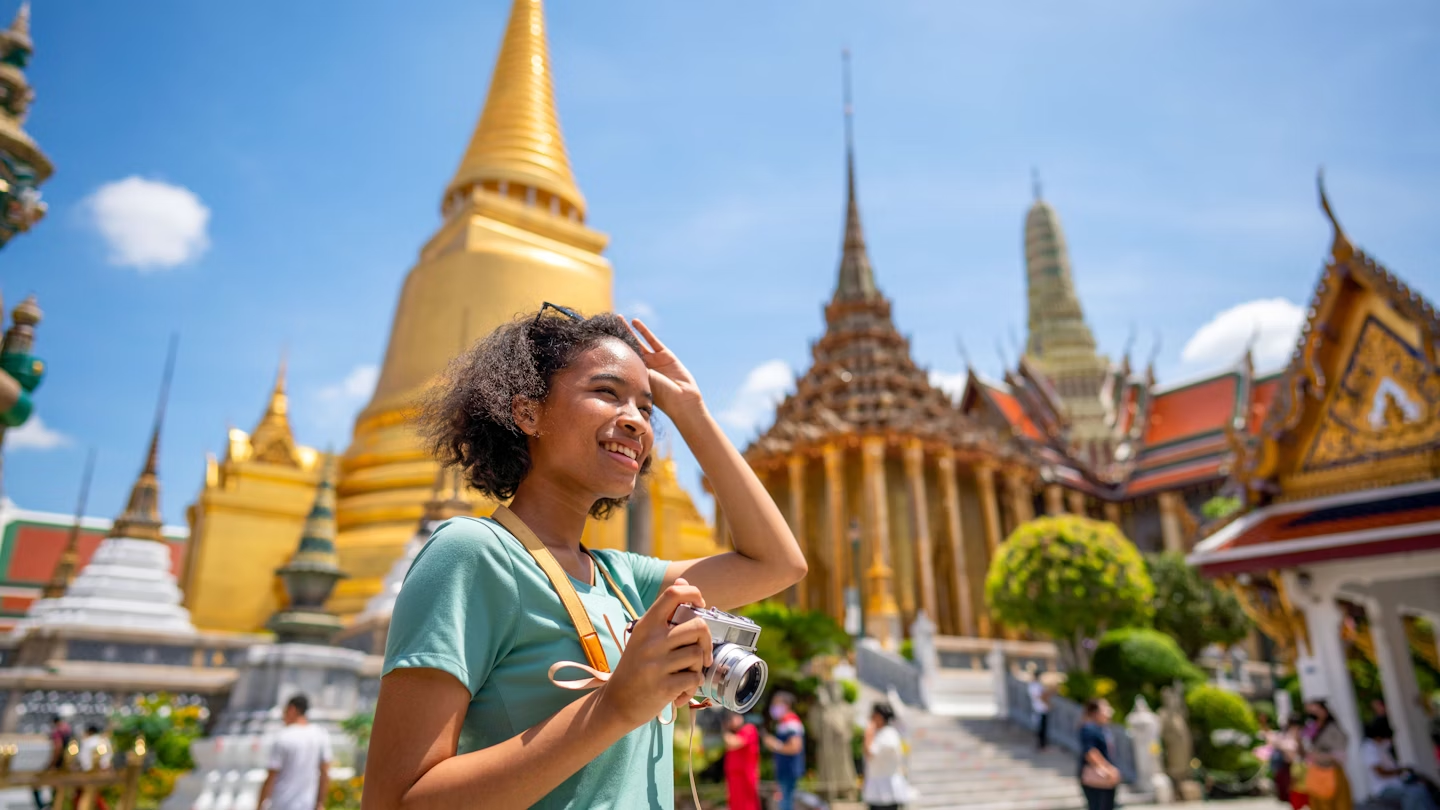
Thailand is one of the easiest places to travel in Asia, but there are some top tips that first-time visitors should know © Witthaya Prasongsin / Getty Images
Thailand has a deserved reputation as one of the easiest places to travel in Asia. There’s an amazing amount to see , hassles are limited, English-language signs and menus are commonplace, and you can get around easily at almost any time of day or night.
However, there are a few things every traveler should know. Here are our top tips for making the most of your trip.
1. Rainy season varies depending on where you are
The June to October rainy season brings heavy showers and regular storms to northern, central and southwestern Thailand, creating dangerous conditions for travel by sea. The southeast coast and the Gulf of Thailand get soaked slightly later, from October to December.
Rainy-season travel means lower prices and smaller crowds, but some accommodations close and many island ferries stop running, including services to the Tarutao archipelago . If this is when you decide to visit, you'll definitely want to pack some kind of wet weather gear.
2. Check for recommended vaccinations
You’ve probably already been jabbed for COVID-19, but most doctors also recommend vaccination against tetanus and hepatitis A. Also consider a rabies shot – dogs, cats and monkeys can all carry the viral disease. Malaria is present along the borders with Laos , Cambodia , Myanmar and Malaysia . If you visit these regions, use anti-malarial prophylaxis such as atovaquone/proguanil or doxycycline.
3. Sensible travelers to Thailand book ahead
If you have your heart set on a particular boat journey, train trip, trek, tour or boutique stay, book ahead for the busy tourist season from November to March or during any religious holiday. During the rainy season, call or email ahead to check if places are open.
4. Follow local etiquette when meeting Thai people
When meeting locals in Thailand, the standard greeting is the wai – a respectful dip of the head with the hands held palms together in front of the chest. Don’t shake hands unless the other person initiates the handshake. If you get invited into a Thai home, remove your shoes before you enter and avoid pointing the soles of your feet towards another person.

5. Be respectful of Buddhism, a part of everyday life in Thailand
Some 95% of Thais are Buddhist, and the national religion weaves through every aspect of life. To show proper respect, remove footwear before entering any Buddhist structure, and wear clothing that covers the shoulders, upper arms and upper legs.
Never point the soles of your feet towards any Buddhist image (or monk), and don’t touch Buddha statues on the head. Give way to monks when walking on footpaths, and don’t sit next to them on public transport. It is also taboo for a woman to touch a monk or their belongings.
6. Dress modestly
Thai women and men usually avoid revealing outfits that show off a lot of skin. Swimsuits are fine for the beach, but away from the sand, throw on a sarong or fisher's pants, plus something that covers the shoulders if you visit religious sites. Topless or nude sunbathing is frowned upon and can attract unwanted attention.
7. Show respect for the king and royal family
The Thais take respect for the monarchy extremely seriously, and lèse-majesté (maligning the royal family) is a criminal offense. Never show disrespect towards the monarch or depictions of the royal family (including on money).
8. Know what to expect at the dining table
When dining out in Thailand, everything tends to arrive on the table at the same time, usually placed in the middle of the table for everyone to share. Thailand abandoned chopsticks in the 19th century. You’ll get a spoon and fork but no knife – but most dishes come as bite-sized morsels, so you won’t need one. Sticky rice is usually bundled up into balls and eaten with the fingers.

9. Vegetarian is a relative term in Thailand
Fish sauce, oyster sauce and egg are widely used as cooking ingredients in Thailand. The safest bet for people who don't eat fish or meat is to seek out Indian-owned vegetarian restaurants, or restaurants serving kin jay Buddhist cuisine. If in doubt, ask the person making the food if it is jay – the term mang sa wirat just means food that doesn’t contain pieces of meat or fish but doesn't mean it's necessarily suitable for vegetarians.
10. Health risks include stomach bugs, mosquito bites and rabies
The most common trouble travelers face in Thailand is trip-spoiling stomach bugs. Never drink tap water, wash your hands before eating, stick to busy eating establishments and be cautious of ice, unwashed or unpeeled fruit and uncooked vegetables. If you become unwell, seek out private hospitals in larger cities rather than public hospitals.
Mosquito bites can easily become infected in Thailand’s tropical climate. Bring mosquito repellent, and use mosquito nets (or bring your own). Rabies is another risk – always seek medical attention if you are bitten by a dog, cat or monkey.
11. Smart travelers steer clear of drugs in Thailand
In June 2022, marijuana and hemp were removed from the Category 5 narcotics list in Thailand. However, there are still restrictions and smoking marijuana in public is not recommended.
Crossing borders with Class A drugs carries the death penalty, and even the possession of small quantities can bring a hefty prison sentence – it’s really not worth the risk. Also note that smoking in public can attract heavy fines. If you take any prescription medicines, check that these are allowed into Thailand before you travel.

12. Prices may well be inflated for tourists
In general, Thailand is hassle-free, but tourists are often charged inflated prices for tuk-tuks and unmetered taxi rides – ask a local how much journeys should cost and use that as a yardstick for a fair fare.
Major tourist sites are popular stalking grounds for cab drivers and touts who will try to steer you towards dubious souvenir shops, fake "tourist offices" and second-rate places to stay, where you’ll inevitably pay more to cover their commission. Book transport directly with the operators to avoid dodgy deals from unscrupulous travel agents.
13. You may be approached by sex workers
Thailand’s sex industry may find you whether you want it to or not. Single male travelers (and even couples) can expect to be approached by sex workers or touts drumming up business, so be ready with a firm refusal.
Be aware that some bars, restaurants and karaoke venues are fronts for sex work – warning signs include red or pink strip lights, large numbers of skimpily dressed female staff and lots of foreign male customers.
14. Political protests can be tense and are best avoided
Thailand can have a lot of protests. When tensions flare up between the government and opposition groups, it can lead to blockades, flight cancellations and sometimes violence. Monitor local news sites such as the Nation for information on simmering political troubles, and avoid protests and other potential flash points.
15. Some governments advise against travel in Thailand’s south
The far south of Thailand, along the Malaysian border, has been wracked by a separatist insurgency since the 1940s. Most foreign governments advise against travel to the districts of Yala, Pattani, Narathiwat and parts of Songkhla.
16. Be very cautious when riding a scooter
Thousands of travelers rent a scooter or motorcycle in Thailand, but make sure your home driving license covers you for any vehicle you hire, and carry your passport (or a copy of the ID pages) in case the police ask for it.
Wear a helmet, ride cautiously and make sure the rental comes with liability insurance – every year, hundreds of tourists are injured in motorcycle and scooter accidents in Thailand. Always give way to larger vehicles, and watch out for livestock, potholes and other hazards on the road.
17. Follow local advice if there's a natural disaster
Thailand is vulnerable to earthquakes and tsunamis, as well as flooding, landslides and cyclones during the rainy season. Heed official advice in the event of a natural disaster, and contact your embassy for up-to-the-minute information on evacuation procedures.
This article was first published Jan 26, 2022 and updated Oct 28, 2023.
Explore related stories
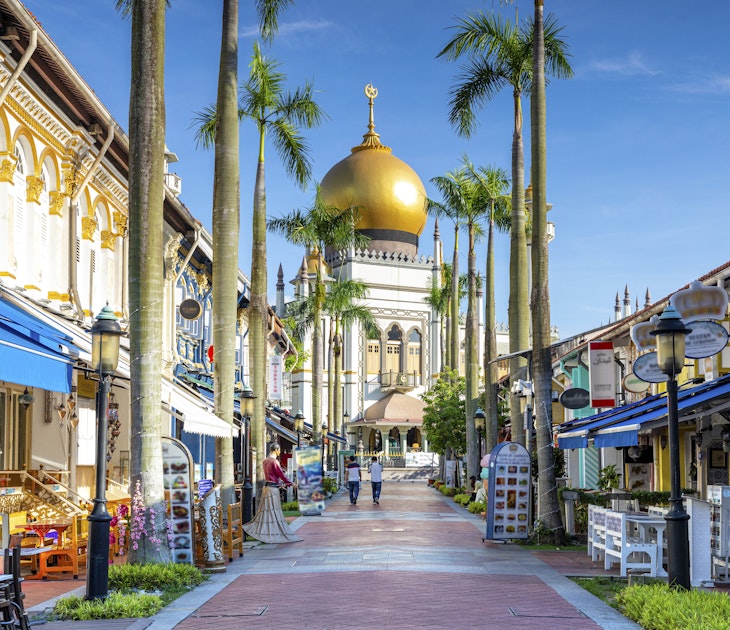
Tips & Advice
Apr 16, 2024 • 12 min read
Singapore's allure goes beyond its iconic hotels, manicured gardens and world-class airport – here are the best places to visit when you arrive.

Mar 14, 2024 • 10 min read

Feb 24, 2024 • 8 min read

Feb 3, 2024 • 7 min read

Jan 29, 2024 • 8 min read

Jan 5, 2024 • 20 min read

Jan 3, 2024 • 5 min read

Dec 27, 2023 • 8 min read

Dec 16, 2023 • 9 min read

Dec 15, 2023 • 7 min read
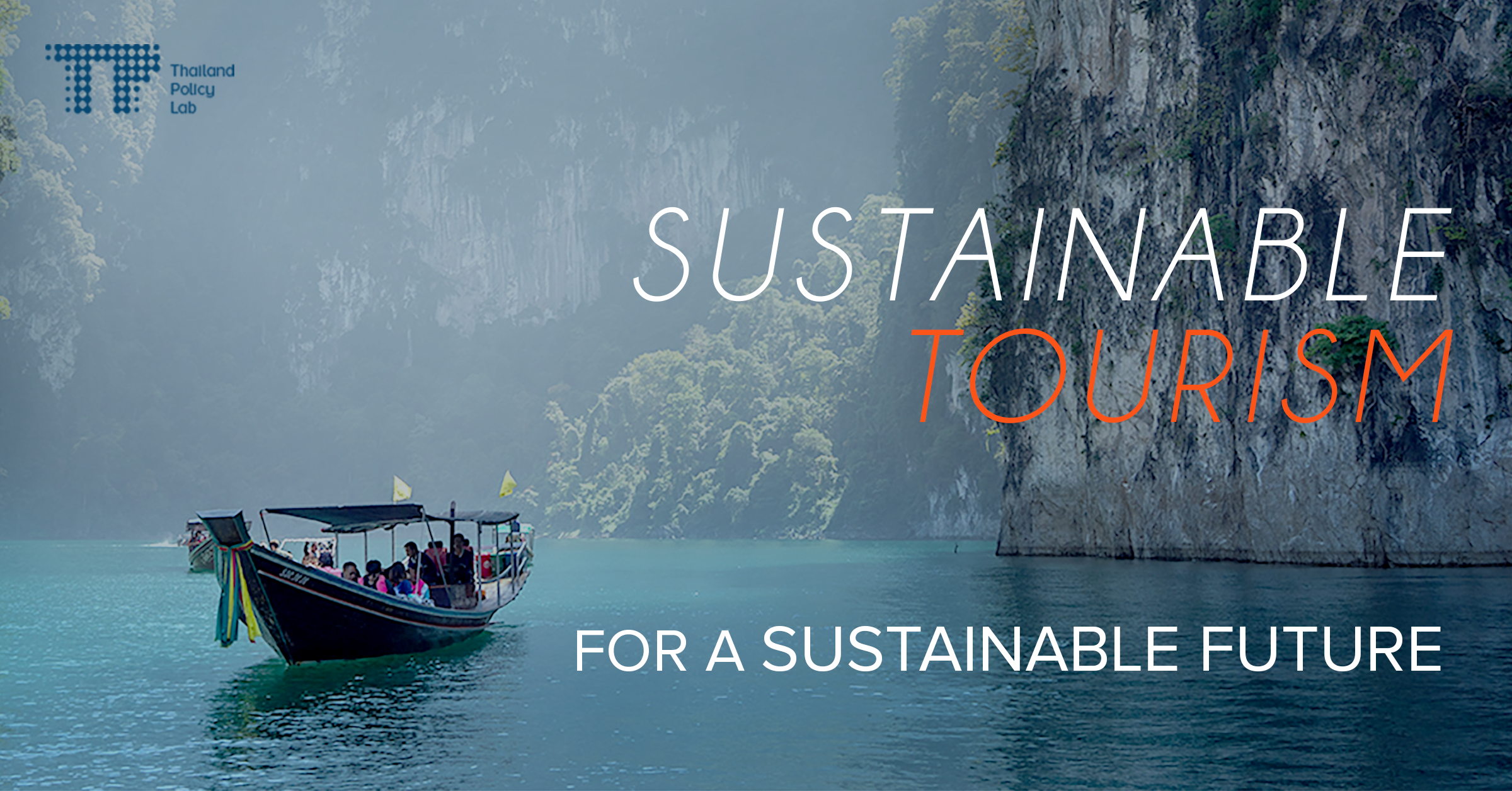
Building a Nation Upon Sustainable Tourism
Key insights.
- Tourism used to be the main source of income for Thailand, accounting for more than 16% of the GDP. However, in the past two years, the tourism industry has been directly affected by the pandemic, and it has lost up to forty million travellers.
- In Phuket, Chonburi, and Bangkok, up to 50% of the local income is derived from tourism (it is 89% in Phuket.) When everything stopped, the locals lost their income; they could not pay their children’s tuition, they lost life security, and their traditional way of life.
- “Sustainable tourism” is discussed again within the tourism industry, and currently in a more enthusiastic manner than ever before. The term is understood and redefined to reflect not only nature and the environment, but also economic stability.
From ‘Amazing Thailand’ to ‘A Land Dispossessed’.
Thailand’s tourism industry is the face of the nation. With plentiful natural resources, Thailand ranks as a destination one should definitely visit once in life. Tourism income is so essential that it accounts for 16% of Thailand’s GDP, not to mention that 61% of the income is derived from international travellers.
The current Thailand tourism policies are derived from the wrecks and ruins of the Thai economy during the 1997 Asian financial crisis. The Thai government floated the Thai baht, resulting in businesses closing down, and agricultural products turned worthless overnight. The national economy stagnated since the prior investments were mainly in the financial institutions, and as a result the wealth distribution never reached the lower income groups. In the following year, the government promoted the ‘Amazing Thailand’ campaign, creating the image of Thailand as a foremost tourist attraction in the world.
In the past 25 years, the country succeeded in attracting tourists from around the world as well as in gaining a growing number of domestic tourists. Still, the 3.01 trillion baht income from tourism before the pandemic hit did not result in better-built infrastructure in tourist attraction cities, nor did it reduce the inequality in the industry due to foreign investors owning a large number of assets, and the numbers we see are not what the locals actually earn.
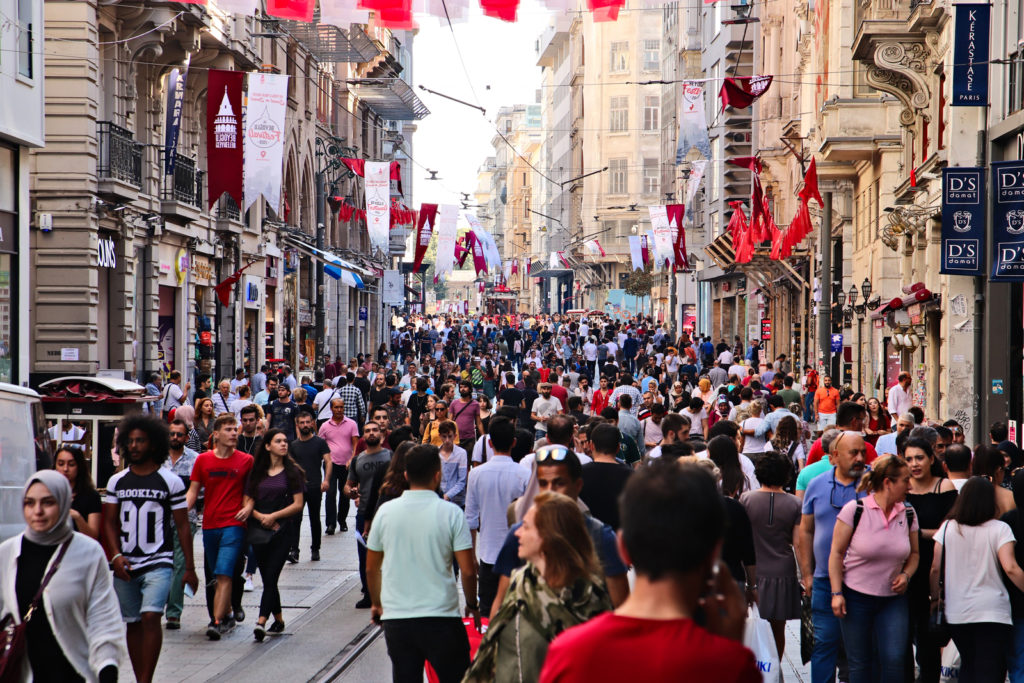
“Take the Tourists Back, Bring Back Our Lives”: the Pre-Pandemic Tension in Popular Cities
A stable economy does not also mean individual financial stability. Tourist cities tend to have a high cost of living especially when compared to cities whose main incomes are from agriculture. Without a government-built system to distribute income to the communities, the “invisible hand” will always haul all assets away from the locals, and leave so many behind.
Just before the pandemic, a lot of popular cities around the world started to realize that mass tourism aiming only to gain extremely high revenue, comes with a high price. It uproots traditions and exiles the locals from their own homes. Mass tourism widens inequality, and sometimes the tourists unintentionally destroy the traditions they come to see.
In 2017, the Barcelona City Council surveyed the locals’ state of mind by asking, “what causes the most stress for you in the city?” It turned out 19% of the respondents answered “problems caused by tourists.” This created more stress for the city dwellers than unemployment, pollution, and corruption. The dissatisfaction started in 2014 when some citizens created the ‘Barcelona Says Enough’ campaign to call for a limitation of the number of travellers, and to express their discontent against the current unfriendly-for-locals and unsustainable tourism model.
Much of the same took place in Spain’s capital Madrid , as in pre-Covid19 times it was full of tourists who came to see the city’s attractions. Hotels sprang up all across the city, and homes and vacant rooms were used to accommodate tourists. The city dwellers themselves migrated to the outskirts and commuted to work in the city. They could no longer afford the high housing prices. A large amount of revenue from tourism comes at a price; namely, stress and struggles for the citizens. The issue is something the government must find a solution for to strike a balance between tourism and the well-being of the locals.
Looking back at Thailand, most of our tourist cities face the same problem. Tourism disrupts the way of life and leads to the high cost of living in tourist spots. The sad reality is that local policy-making is detached from the communities, focusing only on the satisfaction of the tourists. Those who call for change also become a target since change might disrupt the income of the stakeholders.
When no one can guarantee the quality of life nor financial equality, the demand for change is nearly impossible to answer. But this is not an entirely new issue; numerous countries have been through the same incident before as they adapt and try to change their attitude towards tourists from “money-giver” to “those who come to see our culture.”
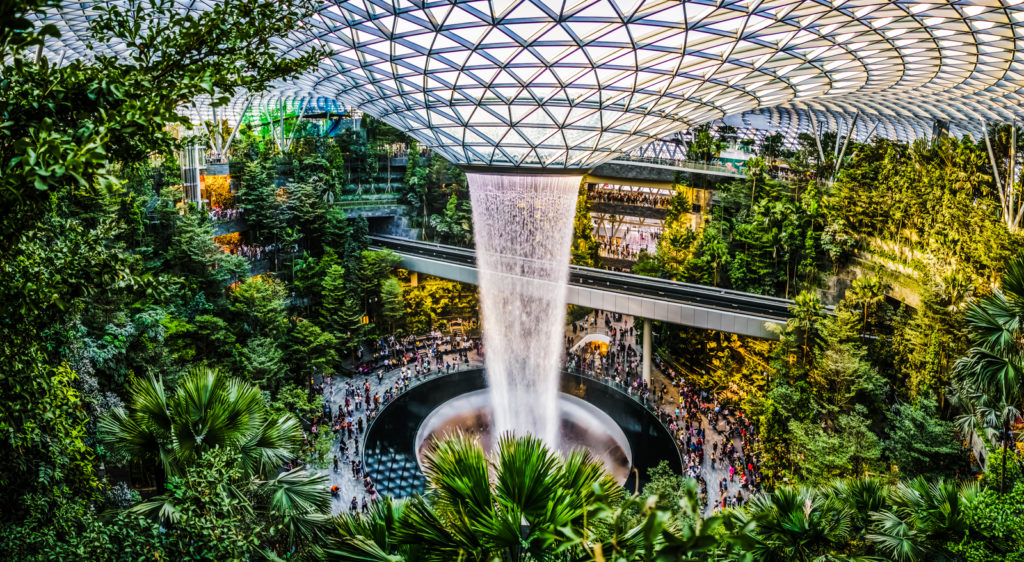
Forests in a City, the Sustainability Before Time
“You cannot chew gum there.”
“Their streets are so clean.”
“You know, there are trees all around.”
These are narratives about Singapore we have always heard. Strict rules become a fascination for tourists to visit once in their life. The small island nation (bigger than Phuket by 200 sq.m.) just gained independence in 1965. Nevertheless they managed to develop to the point they became leaders in various areas. Singapore ranks first as a crime-free city and despite the small number of travellers, they rank second as an Asian tourist attraction destination, the first ranked being Japan. Their success recipe does not depend on building an exciting and glamorous city, but on investing in the citizens’ quality of life.
Clean streets, wide sidewalks, accessible trains. Singapore has all there is to accommodate and provide seamless services to tourists. This responds well to the Free Independent Traveler (FIT) trend. The basic infrastructure is not built for tourists; it is for the quality of life of the dwellers. Unsurprisingly, conversations about Singapore often start with how great their city planning and services are, followed by travelling experiences.
Is this the definition of sustainable tourism? People often understand the term to be related to the environment such as travelling to natural sights, not using plastic-made products or supporting community enterprises. These are just a few constituents especially when we consider Singapore as a model. Sustainable tourism is a shared experience between the tourist and the locals in terms of the economy, society and environment without anyone being left behind. This includes public transport as a factor, since an efficient public transport translates to a friendly experience for both the citizens and travellers. Singapore does not build its tourism industry by detaching it from people’s daily lives, which helps make sure that the local quality of life is maintained.
At the end of last year, Singapore launched the ‘Singapore Reimagine’ campaign as its national agenda towards sustainable tourism so as to ensure safety and connect everything seamlessly to attract travellers in this post- pandemic situation.

The Mass Exodus and Changed Tourism Trends. Where Is Thailand on the World Stage?
Just last year, 2 million workers migrated back to their hometowns. In and amongst those numbers are fresh graduates affected by the pandemic who went to work from home, and also the unemployed. There are certain questions these workers ask themselves: If the pandemic is gone, do I need to get back to the city? If not, how do we live on? The tourism industry stopped almost completely in the past two years. This has changed people’s ways of life; they are trying everything they can to learn new skills for the new jobs they have never done before.
The tourism industry in other countries is facing the same difficulty. Some have come up with campaigns to support local tourism for the economy to move forward, and they have financially supported both tourists and enterprises in times of crisis. Their policies correspond with the number of vaccinations and reduced infections to ensure trust. And certainly, the government has to work with different stakeholders, so the citizens have to be able to access information easily and accurately with a well-built system and welfare.
Even though the number of people who board flights decreased by sixty-six percent, travellers in small cities increase significantly. Enterprises in Majorca Island, Spain, said that since the number of vaccinations increased, people have started to travel again, but with a different pattern. Now most international travellers stay for a long period of time, and they travel to change work locations and to relax at the same time. They focus on new experiences, especially the local culture, and basic conveniences such as the internet, safety, transportation and low prices. All of these factors help travellers make up their minds
The latest policy by the French government is also fascinating. Last May, the French government launched a Culture Pass application that granted 300 euro for 18-year-olds across the country. The teenagers can use money to spend on anything culturally, books, vinyls, paints, music instruments, museums, movie tickets, concerts. More than 8,000 enterprises participate in the campaign which creates both economic boost and opportunities for the youth.
Tourism Can Reduce Inequality
In Thailand there has been a conversation about sustainable tourism for the past ten years, but it has more of a marketing content rather than being actual sustainability talks. Conversation about this is still challenging as it needs effective communication to the public to understand that sustainable tourism can benefit everyone.
A large proportion of Thai citizens are living in poverty and tourism can be the solution to this. Tourism can be a tool used to develop rural areas, just as what Japan has done and still does. Japan develops its local products and culture to be known among their own population and international travellers, succeeding in attracting travellers to visit different cities that are supported by efficient infrastructure to accommodate travellers.
In the case of Thailand, a long-term tourism policy could create new results. We could start by improving infrastructure for every city, creating space for participation from the locals, creating jobs to distribute wealth, or designing tourist attractions to be a part of the traditional way of life. This new tourism must ensure that the vulnerable are included; namely, women, children, the elderly, and persons with disabilities. These are often left behind in development.
Applying the sustainable development goals (SDGs) as development assessment tools, you will find that tourism can help realize those goals by for instance resolving poverty, achieving gender equality, building innovation and quality infrastructure. Thailand has at multiple times been through crises that affected its tourism in the past twenty-five years, and this proves that we need to better connect tourism and communities. The industry will always be fragile unless the communities are included.
The soul of a nation is its citizens. Tourism policies, no matter what exactly they entail, should be able to elevate the quality of life: this is the new definition of sustainable tourism. A journey starts from packing your bags, finding information, and being on your way to the destination. We absolutely need to make sure those experiences always allow our own citizens to benefit from them.
- Facebook icon Facebook
- Twitter icon Twitter
- LINE icon Line
Thailand Policy Lab Team
Explore our people-centered approach for policy design, learn more about public policy, design policies for the people.
- Search Please fill out this field.
- Manage Your Subscription
- Give a Gift Subscription
- Newsletters
- Sweepstakes
20 Best Places to Visit in Thailand — From the Country's Oldest National Park With Secret Waterfalls to Stunning Islands With Excellent Diving
There's no shortage of beautiful places to visit in Thailand.
:max_bytes(150000):strip_icc():format(webp)/IMG_9924-Meagan-Drillinger-2000-b5b1ef20b8b940e397c81373504ecbed.jpg)
EPasqualli/Getty Images
Thailand is so much more than a travel destination — visiting is a bona fide rite of passage. From hostel-hopping backpackers to well-heeled five-star hotel aficionados, there’s something for everyone in “The Land of Smiles.”
My most recent trip to Thailand was in early 2022, when the country implemented strict entry requirements due to the COVID-19 pandemic. At the time, I was one of a few hundred thousand tourists who were allowed into the country, and it felt like I had many of the typically crowded attractions all to myself.
The beauty of Thailand is that it will show you different sides of itself no matter how many times you visit. From the idyllic white-sand beaches and palm-fringed islands in the south to the misty hillsides and temple-peppered mountains of the north, the rattle and hum under neon lights of nonstop Bangkok, and the ruins of ancient cities surrounded by jungle, Thailand never disappoints.
So, what are the best places to visit in Thailand? I reached out to a Thailand travel expert and threw in a bit of my own first-person experience to help you narrow down this ever-growing list.
Tessa Desjardins/Travel + Leisure
For most travelers, an adventure in Thailand will likely kick off in the nonstop, energetic capital city, Bangkok. A dizzying destination and one of my favorite international cities, Bangkok is full-on sensory overload — but in the best way. Dig into sizzling street food; meander back alleys and bustling thoroughfares in search of small markets, shops, and hidden temples; cruise along the Chao Phraya River, and grab a cocktail at the dozens of sky-high rooftop bars.
Tip: Book a room at the Capella Bangkok or Mandarin Oriental, Bangkok — two iconic luxury hotels with stunning locations perched on the Chao Phraya River.
IronHeart/Getty Images
Second to Bangkok on most visitors’ lists is the northern city of Chiang Mai. Many travelers even prefer Chiang Mai to Bangkok for its relatively slower pace of life. The spectacular city is bursting with temples (Wat Phra That Doi Suthep is a must) and humming with restaurants and bars.
"I would say for anybody, whether it's their first time or a repeat trip to Thailand, if you have been there or you haven't, [you have to visit] Chiang Mai," said Grant Ekelund , Travel + Leisure A-List advisor and senior travel consultant and Asia specialist at InsideAsia. "It's such a neat city. It’s one of those destinations that has something for everyone … Are you a foodie? Do you want to hike? See cool temples? Have amazing trekking opportunities? It can all be done [here], and it slots into any itinerary perfectly."
Koh Phi Phi
Thailand has more than 1,400 islands scattered around its coastline, but few are as famous or iconic as the Phi Phi Islands in the Andaman Sea. Comprising two islands — Phi Phi Don and Phi Phi Leh — Koh Phi Phi is known for its natural beauty, excellent diving, and raucous party scene. For the latter, Phi Phi Don is the most famous. Phi Phi Leh, meanwhile, is uninhabited and beloved by those looking to disappear into nature. It was blasted into the public eye about two decades ago, when Leonardo DiCaprio's character went in search of an island paradise in the film "The Beach," which is set in real-life Maya Bay.
Alexander Spatari/Getty Images
While we’re on the topic of Koh Phi Phi, we’d be remiss not to mention Krabi province as a whole. Located in southern Thailand, bordering the Andaman Sea, Krabi is home to many of the beautiful beaches and islands that make Thailand famous.
"I've been booking many [trips to] Krabi lately," said Ekelund. "It ticks a lot of boxes for people. You've got the beauty, cool cliffs, and interesting geology. It has a beach, but it's for people who don't want to simply park it on the sand for 10 days. Krabi offers activities and more." Some highlights include the beach town of Ao Nang, as well as islands like Phuket, Koh Lanta, Koh Yao Yai, Koh Lipe, Railay Beach, and several national parks.
Koh Yao Noi
Sunphol Sorakul/Getty Images
My first trip to Thailand was to the small island of Koh Yao Noi back in 2013. One of the most beautiful islands in Phang Nga Bay, Koh Yao Noi is flecked off the coast of its sibling island, Koh Yao Yai. Sandy beaches and small fishing villages comprise most of the land here, along with the luxe Six Senses Yao Noi resort tucked along the eastern coast. The property’s infinity pool is legendary for its explosive sunrise views that blur the distinction between the sky and sea.
pratan ounpitipong/Getty Images
Many Thai cities have the ability to make visitors feel like they’re stepping back in time. But few create the illusion as vividly as Ayutthaya. Once the capital of the Kingdom of Siam, the ruins of Ayutthaya are breathtaking and hauntingly beautiful. It’s only an hour from Bangkok, making it an easy day trip or a great overnight excursion.
Boyloso/Getty Images
Sukhothai is another beautiful ancient city. "Sukhothai is for people who like history. I was taken by how beautiful the area is and how extensive the ruins are," said Ekelund. "We cycled around the ruins with a guide and got a great sense of the history. Sukhothai is much more rural and harder to reach, meaning it has fewer tourists. You also don't have a city built up around it."
Mae Hong Son Loop
Piriya Photography/Getty Images
Of all the places I've visited in Thailand, none stick with me as much as the Mae Hong Son Loop. This 300-mile route is most often tackled by travelers on the back of motorbikes looking to brave the mountain switchbacks that descend into the thick jungle and pass from small village to small village. It's not a journey to be taken lightly — motorbike experience is strongly recommended — but those who make the trip are rewarded with spectacular scenery and access to remote communities.
Khao Yai National Park
Bunphot Phairoh/500px/Getty Images
Thailand has more than 100 national parks. The oldest is Khao Yai National Park, which also happens to be the country's third-largest. Within the park lies a web of hiking trails, secret waterfalls, and herds of elephants.
"Khao Yai has a lot of bat caves, too, which is one of the coolest things I've ever experienced," said Ekelund. "I stood there for 30 minutes while an unending stream of bats flew over my head. It was all so beautiful. It's a beautiful park with waterfalls, trekking, and hiking. Plus, it's just a couple of hours [by car] from Bangkok."
wichianduangsri/Getty Images
Approximately two hours southeast of Chiang Mai is the city of Lampang. Much like many large cities in Thailand, Lampang has its fair share of temples, street food, and markets. But unlike the others, it feels like a place where time has stood still. Just listen for the sound of clip-clopping horse carts, still used for transportation, and you'll understand what I mean. Because of Lampang's integral role in the teak trade, many migrants from Myanmar made this northern city home, and you'll find teak mansions and Burmese-style temples everywhere.
fokkebok/Getty Images
Chiang Rai, a northern Thai city, is often glossed over as most visitors opt to stop in Chiang Mai instead. "I am always struck by how chill Chiang Rai is," said Ekelund. "It's a relaxing place to be and has cool stuff to do. It's a great city to walk through the neighborhoods and see people living their daily lives. I enjoyed the mountains, nearby villages, and opportunities for cultural exchange."
Jackyenjoyphotography/Getty Images
No list of best places to visit in Thailand would be complete without Phuket. While Phuket has a reputation for being crowded with resort after resort, the truth is it’s for a reason — the island is a beautiful place to be. Thailand's largest and most easily accessible island brings visitors in by the millions each year for its wide array of hotels, white-sand beaches, parties in Patong, colorful snorkeling, and eclectic culinary scene.
Oleh_Slobodeniuk/Getty Images
Thailand’s second most popular island sits off the country’s eastern coast in the Gulf of Thailand. Koh Samui is wreathed in bone-white sandy beaches, peppered with temples, veined with hiking trails, and splashed with fabulous resorts and energetic beach towns and villages.
"It's hard to beat Koh Samui. It's just beautiful," said Ekelund. "If you want easy access without a full resort stay, I recommend Anantara Bophut . You can walk to Fisherman's Village, and you won’t feel like you're 'stuck' at a resort. If you want a full resort experience, I like Banyan Tree Samui for its private beach and spectacular rooms."
Cavan Images/Getty Images
The tiny island of Koh Tao, located in the Gulf of Thailand and not too far from Koh Samui, is one of the country’s best locations for diving and snorkeling. In fact, most avid divers will tell you that Koh Tao is their destination of choice in Thailand. The palm-fringed island is best known for its abundance of sea turtles.
Kanchanaburi
Thanit Weerawan/Getty Images
Shrouded in thick jungle and sliced by miles of track belonging to what was once known as the “Death Railway,” Kanchanaburi has a dark and tragic history. The infamous train route, which crosses the River Kwai, was built from 1940 to 1943 by prisoners of war taken by the Japanese in World War II. Today, only a small section of the rail route is open and takes travelers on a journey through the mountain cliffs and bamboo forests of Kanchanaburi. "If you're into history, beautiful vistas, trains, and wildlife, you can get all of that in Kanchanaburi. It's a place not many tourists go, either, so it has a lot to offer," said Ekelund.
Tieu Bao Truong/Getty Images
Trang is the province directly south of Krabi, which means it has the same beautiful stretch of Andaman Sea coastline, except with a fraction of the crowds. There’s no shortage of islands to explore around Trang, like Koh Kradan and Koh Muk. Koh Muk's crown jewel is the secret Emerald Cave, which can be entered via a dark tunnel that leads to a protected beach surrounded by towering limestone cliffs.
Pierrick Lemaret/Getty Images
Located in the province of Phang Nga, Khao Lak can be thought of as Phuket’s much quieter cousin. Less than two hours from Phuket International Airport, Khao Lak is home to miles of sprawling, empty beaches, plus it offers easy access to beautiful national parks.
"I've been hyping Khao Lak quite a bit for people who want something quieter," said Ekelund. "You have easy access to the Phuket International Airport, but it's much more chill than the other Andaman Islands. It has beautiful beaches, good infrastructure, a great spot for dining, and it’s not hard to get to."
Inigo Arza Azcorra/Getty Images
Whether or not you drive the Mae Hong Son Loop, you’ll want to stop in Pai when visiting northern Thailand. Once a sleepy community of expats, Pai has morphed into a must-visit backpacker destination. Visitors will find funky cafes and coffee shops, endless bars, guest houses, hostels, and a dispensary or two, particularly now that cannabis is no longer considered a narcotic in the country.
Khao Sam Roi Yot National Park
awaywithtrex/Getty Images
South of Bangkok, the province of Prachuap Khiri Khan is best known for the glamorous, frenetic beach town of Hua Hin. The province runs down the skinny arm of the country, bordering the Gulf of Thailand on one side and Myanmar on the other. Here’s where you'll find Khao Sam Roi Yot National Park, Thailand's first marine national park. The park's top attractions include a series of spectacular caves and a sprawling freshwater marsh. Visitors can enjoy the park’s beaches, islands, walking trails, and thick mangrove forests. It’s just an hour from Hua Hin and about 3.5 hours from Bangkok.
4FR/Getty Images
This long, skinny island, also in the province of Krabi, flies under the radar, but it’s one of my favorite places in the country. Koh Lanta is home to beautiful beaches, great restaurants, and the Mu Ko Lanta National Park, an amazing spot for diving and seeing undeveloped beaches.
Related Articles
We've detected unusual activity from your computer network
To continue, please click the box below to let us know you're not a robot.
Why did this happen?
Please make sure your browser supports JavaScript and cookies and that you are not blocking them from loading. For more information you can review our Terms of Service and Cookie Policy .
For inquiries related to this message please contact our support team and provide the reference ID below.

IMAGES
COMMENTS
After months of strict travel restrictions due to the COVID-19 pandemic, Thailand is gearing up for a return to normalcy by easing some travel restrictions and quarantine requirements and allowing normal tourists to enter the country. Vaccinated travelers are allowed to travel to Thailand without quarantine under the Phuket Sandbox and the Samui Plus Sandbox programs.
The official site of Tourism Authority of Thailand. Amazing Thailand, Travel information, Travel guide, maps, hotels, accommodation, attractions, events & festivals, food, culture, shopping information to help you plan your Thailand vacations.
Updated on 13 February, 2023, at 09.00 Hrs. Bangkok - The Tourism Authority of Thailand (TAT) would like to clarify that Thailand continues to welcome all international tourists under the fully-reopen-to-tourism policy that was introduced on 1 October, 2022.. Thailand's Deputy Prime Minister and Minister of Public Health, H.E. Mr. Anutin Charnvirakul, said "International travellers ...
Visions & Missions. Organize chart. Board of TAT. Executive of TAT. Policy & Marketing Plan. TAT Informative. TAT History. Operation Reports. Financial Audit Reports.
A full list of updated entry requirements, including proof of an insurance policy with Covid-19 coverage for no less than $50,000, can be found on the Tourism Authority of Thailand website ...
Thailand's economy is reliant on international tourism, a once-flourishing sector that has been impacted by pandemic restrictions. But there have been continual government efforts to boost domestic travel, and measures to support returning international demand after Thailand began reopening to vaccinated international travelers from 63 countries on November 1, 2021. 1 Pasika Khernamnuoy and ...
The Tourism Authority of Thailand (TAT) is strengthening the ongoing "Visit Thailand Year: Amazing New Chapters" campaign towards a meaningful travel direction. Underlining the kingdom's soft power foundations and experience-based tourism, key strategies include elevating supply and sustainable standards, and raising awareness among stakeholders about the importance of being hospitable ...
The COVID-19 pandemic wreaked havoc on the world. International travel ground to a halt and countries were forced to implement strict processes and entry requirements to halt the spread of the virus. Thailand introduced quarantine measures and Thailand Pass. Thailand Pass required visitors to register details like vaccination status, flight, and hotel bookings, and confirmation
The Tourism Authority of Thailand (TAT) on Friday issued a statement clarifying rules and restrictions for international tourists arriving in the country from November 1. Thailand will from Monday be open to fully-vaccinated visitors from 46 countries/territories. There are currently three entry options for foreign tourists, including Exemption ...
Thailand's tourism industry imploded during COVID-19, which saw international tourist numbers fall from more than 40 million in 2019, the last full year before the pandemic, to 6.7 million in ...
The Cabinet on 14 February 2023 approved a draft announcement of the National Tourism Policy Committee on the collection of the "Thailand Tourism Fee" for international tourist arrivals. According to the announcement, each foreign tourist entering Thailand by air will be charged 300 baht for each trip, while the fee for foreign tourists ...
Thailand Tourism booth at a Travel and Tour Expo. An organization called Tourism of Thailand was founded in 1924. ... Thailand introduced a cash rebate policy for foreign films shot in Thailand. It took effect in January 2017. Budget. TAT's budget for FY2017 is 7,094.8 million baht.
3. Sensible travelers to Thailand book ahead. If you have your heart set on a particular boat journey, train trip, trek, tour or boutique stay, book ahead for the busy tourist season from November to March or during any religious holiday. During the rainy season, call or email ahead to check if places are open. 4.
2 The Second Thailand National Tourism Development Plan (2017 - 2021) To realize the vision of Thailand's tourism 2036, the nation needs to devise stepping stones to lay out the development path to reach the ambitious goal. 5-year objectives and targets have been set to portray what
Tourism income is so essential that it accounts for 16% of Thailand's GDP, not to mention that 61% of the income is derived from international travellers. The current Thailand tourism policies are derived from the wrecks and ruins of the Thai economy during the 1997 Asian financial crisis. The Thai government floated the Thai baht, resulting ...
Thailand's tourism industry, once a beacon of economic prosperity, has experienced a rollercoaster of highs and lows. The late 1980s and early 1990s marked an era of unprecedented growth, with the country becoming a must-visit destination for travellers worldwide. However, this boom was not without its consequences.
Thailand National Tourism Development Plan 2012-2016 will be roughly introduced. Keywords: tourism development policy, The Thailand National Tourism Development Plan, community tourism, Thailand 1.Introduction Tourism Industry has played important role in Thailand Economy. Thailand government believes tourism as a fast tract to economy growth ...
Krabi offers activities and more." Some highlights include the beach town of Ao Nang, as well as islands like Phuket, Koh Lanta, Koh Yao Yai, Koh Lipe, Railay Beach, and several national parks. 21 ...
Thailand's economy grew in the first quarter thanks to strength in private consumption and tourism, despite continued weakness in goods exports. Gross domestic product rose 1.5% from a year ...
Last year, Phuket, Thailand, was the most overcrowded tourist destination. For each of the island's 416,000 inhabitants, 118 vacationers showed up, according to a study by MoneyTransfers.com.
Thailand's economy grew better-than-expected in the first quarter, fueled by tourism and private consumption, easing urgency on the central bank to respond to the government's calls for lower ...
Impact of heavy cannabis regulations on the Thai Economy. As the Thai government navigates the complex landscape of cannabis regulation, the potential ramifications for the economy cannot be discounted. These implications may be evident in diverse areas like the tourism sector and local businesses, and it's crucial to explore these more ...